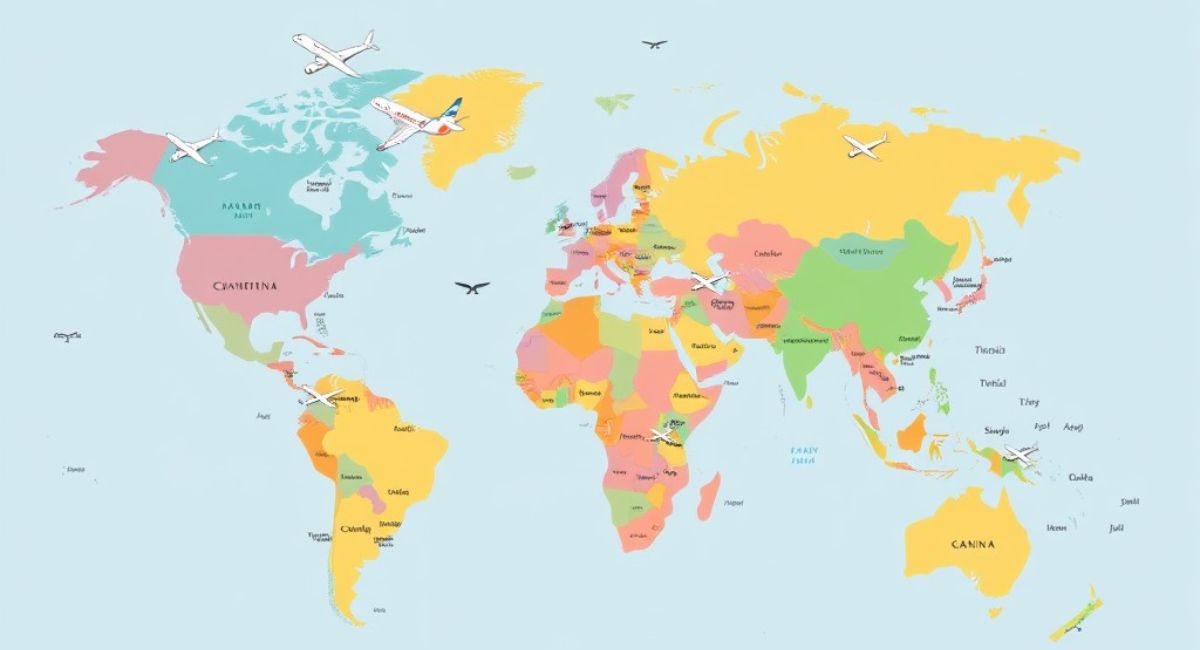Navigating the process of obtaining a visa can often seem daunting, especially for travelers heading to a country as diverse and culturally rich as India. For German and Canadian citizens planning their journey to India, understanding the visa application process is crucial. This blog post will guide you through the steps, types of visas available, and essential tips to ensure a smooth experience.
Understanding the Indian Visa System
India offers various visa categories based on the purpose of travel. These can be broadly classified into tourist visas, business visas, student visas, and more. Each category has specific requirements and processing times, so it is essential to determine which visa type aligns with your travel intentions. Indian Visa for German Citizens.
For German and Canadian citizens, the e-Visa option is particularly popular. This electronic visa allows for a simplified application process, enabling travelers to obtain their visa online without the need to visit an Indian embassy or consulate. However, it is crucial to check eligibility criteria and ensure that the application is submitted well in advance of your intended travel dates.
Types of Visas for German and Canadian Citizens
When applying for an Indian visa, it’s essential to choose the correct type that aligns with your travel purpose. For short visits, such as tourism, a Tourist e-Visa is typically the best option. This visa allows travelers to stay in India for up to 90 days and is valid for double entry.
For those traveling for business purposes, a Business Visa is necessary. This visa permits a longer stay and multiple entries, catering to the needs of business travelers. Additionally, students wishing to study in India must apply for a Student Visa, which is generally valid for the duration of their course.
Understanding these different visa types allows travelers to select the most appropriate option and avoid common pitfalls during the application process.
The Application Process
The application process for an Indian visa varies slightly between the e-Visa and traditional visa options. For the e-Visa, applicants need to complete an online form, upload necessary documents, and pay the visa fee through a secure payment gateway. The process is relatively straightforward, but attention to detail is crucial. Any discrepancies in the information provided can lead to delays or rejections.
For those opting for a traditional visa, the process begins with filling out a visa application form, which can often be downloaded from the Indian embassy or consulate's website. Supporting documents, including a valid passport, passport-sized photographs, and a letter stating the purpose of travel, must be submitted. After submitting the application, applicants may need to attend an interview or provide additional information if requested.
Regardless of the visa type, it is advisable to apply well in advance—ideally, at least 4-6 weeks before your travel date to account for any unforeseen delays.
Required Documents
Gathering the necessary documents is a critical step in securing an Indian visa. For the e-Visa, applicants must provide a scanned copy of their passport (valid for at least six months from the date of arrival in India), a recent passport-sized photograph, and an itinerary outlining travel plans. Indian Visa for Canadian Citizens.
For traditional visas, additional documents may be required, such as proof of accommodation, financial statements, and, for business visas, an invitation letter from an Indian company. Ensuring all documents are complete and accurately reflect the information on your application will help expedite the process.
Processing Time and Fees
The processing time for an Indian visa can vary based on the type of visa requested and the volume of applications at the time of submission. Generally, e-Visas are processed within 72 hours, while traditional visas may take anywhere from a few days to several weeks.
Visa fees also differ depending on the visa type and the applicant's nationality. German and Canadian citizens should check the latest fee structures on the official Indian visa website or the respective embassy’s site. It is essential to be aware of any additional service fees that may apply, especially for expedited processing or courier services.
Health and Safety Considerations
Before traveling to India, it is crucial to consider health and safety guidelines. Vaccinations may be recommended or required, depending on your travel itinerary. Common vaccinations include Hepatitis A, Typhoid, and Tetanus. Travelers should consult their healthcare provider at least six weeks prior to departure to discuss vaccination needs and any necessary medications.
Additionally, it is essential to stay informed about health advisories and safety regulations in India. Registering with your embassy can also provide a layer of security, ensuring you receive timely updates regarding any travel advisories or emergencies.
Cultural Awareness and Etiquette
Understanding cultural differences can enhance your travel experience in India. Respect for local customs and traditions is paramount. Dress modestly, especially when visiting religious sites, and familiarize yourself with local etiquette regarding greetings and social interactions.
Learning a few basic phrases in Hindi or the local language can also go a long way in establishing rapport with locals. Showing an interest in the culture will enrich your travel experience and foster positive interactions.
Conclusion
Securing an Indian visa as a German or Canadian citizen involves understanding the various visa types, following the application process diligently, and preparing the necessary documentation. With proper planning and awareness of cultural norms, your journey to India can be a rewarding experience filled with adventure and discovery.
Whether you are exploring the vibrant streets of Delhi, experiencing the tranquility of Kerala, or marveling at the architectural wonders of Rajasthan, being well-informed about the visa process will allow you to focus on what truly matters: immersing yourself in the rich tapestry of Indian culture and heritage.
